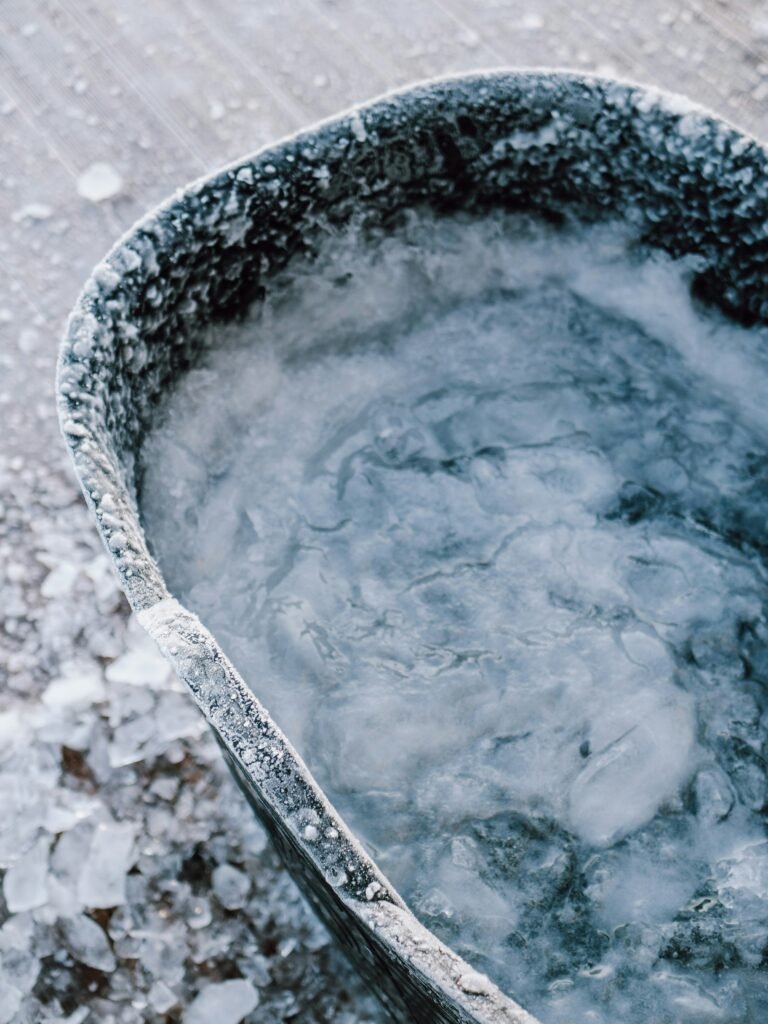Have you ever wondered why some people seem to thrive in cold weather while others shiver just thinking about it? Cold exposure isn’t just about enduring the chill or toughening up; it has fascinating implications for how your autonomic nervous system (ANS) works. Let’s unpack this relationship and see how you can harness the power of cold exposure for your health.
Understanding the Autonomic Nervous System
Before you get too deep into the cold, it’s crucial to understand what the autonomic nervous system is and how it influences your body. Think of the ANS like the behind-the-scenes director of a complex play. It regulates all those automatic functions you barely think about—like your heartbeat, digestion, and even your stress response.
The Two Main Divisions of the ANS
The ANS has two primary divisions: the sympathetic nervous system (SNS) and the parasympathetic nervous system (PNS).
| Division | Function | Common Effects |
|---|---|---|
| Sympathetic (SNS) | Prepares the body for ‘fight or flight’ | Increased heart rate, dilated pupils, and heightened alertness |
| Parasympathetic (PNS) | Promotes ‘rest and digest’ | Decreased heart rate, increased digestion, and relaxation |
In simpler terms, when your body is under stress, the SNS kicks in to help you respond quickly. When things calm down, the PNS supports recovery. The balance between these two systems is key for your overall well-being.
What Happens During Cold Exposure?
Cold exposure can be understood as any time your body experiences temperatures significantly below what it’s used to. This could be anything from taking a cold shower to immersing yourself in ice water.
Initial Physiological Responses
When you hit the cold, your body responds dramatically. The first thing you might notice is an involuntary gasp or a shiver. This is part of your body’s initial reaction to conserve heat and maintain core temperature.
- Vasoconstriction: Blood vessels constrict to limit blood flow to the skin, preserving heat for vital organs.
- Increased Metabolism: Your body may ramp up metabolism to generate heat, burning calories in the process.
Isn’t it wild how your body is constantly working to keep you safe?
Hormonal Changes
Cold exposure triggers hormonal changes, particularly increasing norepinephrine and adrenaline levels. These hormones are essential for activating the SNS, which can elevate your focus and energy.
- Norepinephrine: Known for its role in stress response, it can improve mood and increase attention.
- Adrenaline: Gets your heart racing and prepares your body for action.
This hormonal shift can lead to feelings of alertness and even euphoria.

Cold Exposure and the Sympathetic Nervous System
Considering the previous descriptions, it’s evident that cold exposure has a significant impact on the sympathetic nervous system.
Activating the Stress Response
When you experience cold exposure, your body interprets this situation as a form of stress. An increased heart rate and quicker breathing are common responses. For some, this sensation can even feel invigorating.
- Heightened Alertness: This can be compared to drinking a cup of coffee. You feel awake and ready.
- Increased Pain Tolerance: Cold exposure can alter your perception of pain, possibly making you feel less sensitive to discomfort.
Short-Term vs. Long-Term Effects
Short-Term Effects:
- Rapid breathing
- Increased heart rate
- Tense muscles
Long-Term Benefits:
- Improved stress tolerance
- Enhanced focus
- Better emotional resilience
You might be surprised to learn that repeated exposure to cold can lead to positive adaptations in how your body manages stress.
Cold Exposure and the Parasympathetic Nervous System
Once your body has adapted to cold exposure, it can pivot from an initial stress response to promoting recovery and restoration through the parasympathetic nervous system.
The Balance of Relaxation
After your body adjusts to the cold, the PNS begins to activate. This is what promotes a sense of calm and relaxation in the aftermath of cold exposure.
- Decreased Heart Rate: Your heartbeat starts to slow down as you recover.
- Improved Digestion: This is a reminder that recovery isn’t just mental; it’s physiological as well.
You might find that after cold exposure, you feel more at peace, as if a weight has been lifted.

Benefits of Cold Exposure on Autonomic Regulation
So, how can this chilly practice benefit you on a broader scale? Let’s look at some compelling advantages.
Enhancing Stress Resilience
Regular cold exposure can train your ANS to respond more adeptly to stress.
- You learn to manage discomfort, which can translate into emotional and psychological resilience outside of the cold.
- This can impact how you handle everyday stressors, making them feel less daunting.
Improved Heart Rate Variability
Heart rate variability (HRV) is a critical measure of how well your autonomic nervous system is functioning. Higher HRV is often associated with better health.
- Cold exposure can enhance HRV, indicating better adaptability to stress.
- You’re effectively signaling to your body that you can handle more than you think.
Boosting Immune Function
Emerging research suggests that cold exposure may stimulate the immune system.
- Increased circulation can aid in the distribution of immune cells throughout the body.
- Regular exposure may lower the risk of infections.
By embracing the cold, you’re not just toughening up; you’re potentially bolstering your defenses against illness.
Practical Applications of Cold Exposure
You might be curious about how to incorporate cold exposure into your life effectively. Here are some practical methods for reaping the benefits discussed.
Cold Showers
Starting with cold showers is one of the easiest ways to introduce your body to cold exposure.
- Timing: Aim for 30 seconds to a minute of cold water at the end of your regular shower.
- Breathing Techniques: Focus on deep, controlled breaths to ease the shock.
Over time, you’ll find that your body adapts, and you might even enjoy the sensation.
Ice Baths
For those ready to take it a step further, ice baths provide a more intense experience.
- Preparation: Make sure you have a safe setup to minimize the risk of hypothermia.
- Duration: Start with 1–3 minutes and gradually build up as your tolerance increases.
Natural Cold Environments
If you’re fortunate enough to live near natural bodies of cold water, swimming or bathing is a wonderful option.
- Be mindful of local conditions and safety guidelines.
- Merely spending time in the cold air can also be beneficial.

Embracing the Cold Mindset
The relationship between cold exposure and your autonomic nervous system is fascinating and offers a unique perspective on wellness. But the mental component is just as crucial. Here’s how you can cultivate a positive mindset toward cold exposure.
Shifting Your Perspective
Instead of seeing cold as an enemy, consider it an ally for growth.
- Embrace the Discomfort: Rather than avoiding cold, view it as an opportunity to build resilience.
- Practice Gratitude: Each time you embrace the cold, remember all the ways it benefits your body and mind.
Building a Routine
Integrating cold exposure into your routine can amplify benefits.
- Schedule It: Make your cold exposure a regular practice, just like exercising or meditating.
- Stay Consistent: The more you can regularly expose yourself to the cold, the more your body will adapt.
Cold Exposure Safety and Precautions
While the benefits of cold exposure can be enticing, it’s vital to approach this practice safely. Here are key precautions to consider.
Listen to Your Body
Your body is a remarkable guide. If you feel dizzy, excessively cold, or unwell, it’s crucial to take a step back.
Gradual Exposure
Jumping into extreme cold without preparation can be dangerous.
- Start with shorter exposures and gradually increase the duration as your body adapts.
Know Your Limits
Be aware of your personal limits to avoid negative consequences.
- If you have medical conditions, consult a healthcare professional before beginning cold exposure practices to ensure safety.
Warming Up
After cold exposure, take careful steps to warm up.
- Gradually reheat your body with warm clothing, drinks, or movement.

Conclusion: Winter Will Be Your Friend
In summary, cold exposure has impressive implications for the autonomic nervous system. By harnessing this powerful tool, you can improve your resilience to stress, enhance emotional well-being, and even boost your immune system. So, the next time you encounter a breeze or a chill, consider leaning into that discomfort—you might just find it offers more than you expected. With practice, a supportive mindset, and safety precautions, you can redefine your relationship with cold and discover newfound strength within yourself.
How do you feel about the idea of embracing the chill? You might be surprised by the mental and physical benefits that await you.

